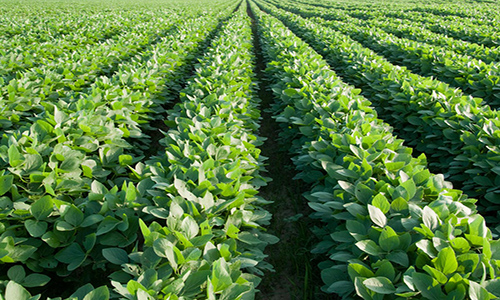According to Andre Reis, the state soybean specialist with the University of Missouri Extension, Missouri soybean yields have the potential to meet or surpass national averages. This optimism comes in the wake of data from the USDA National Agricultural Statistics Service, which shows that national soybean yields have been increasing at a rate of 0.4 bushel per acre annually over the last 80 years. Illinois and Iowa have experienced yield increases of 0.47 and 0.48 bushels per acre per year, respectively, outpacing Missouri’s average growth of 0.375 bushels per acre annually.
Reis is dedicated to leveraging MU’s science-based research to elevate Missouri’s soybean production. Soybeans represent Missouri’s top agricultural product in both acreage and economic value. With production segmented into seven distinct districts across the state, Districts 6 and 7, spanning from the St. Louis region to the Missouri Bootheel, have shown exceptional yield improvements, notably with District 7 achieving a 0.62 bushel per acre increase in 2020.
Factors contributing to these yield gains include the adoption of advanced farming technologies and strategies. These include selecting optimal planting dates, adjusting plant populations based on variety specifications, and improving soil fertility and crop protection practices. In areas lacking irrigation, strategies to mitigate drought impact have proven effective, such as varying maturity groups and planting dates to align critical growth stages with more favorable weather conditions.
Reis’s research underscores the significance of planting dates as a key determinant of soybean yields, citing MU soybean variety testing data that highlights a 3.5 bushel per week yield decrease for plantings after May 15. The reproductive phase in July is crucial, with weather conditions during this time being the most significant variable affecting yield outcomes.
The MU Variety Testing Program has gathered extensive data since 1973, analyzing the performance of different maturity groups across Missouri’s diverse agricultural environments. Maturity Group IV varieties have seen a modest yield increase of 0.29 bushel per acre per year, whereas Maturity Groups II and III have experienced more substantial gains. See this link for more information.
To assist growers in selecting the appropriate maturity group for their crops, Reis has developed a maturity group decision tree. This tool considers various factors, including day length, evapotranspiration rates, and precipitation patterns, to guide farmers in making informed planting decisions.
Missouri’s soybean yields lag slightly behind those of Illinois and Iowa but remain competitive within the region. For additional details on Missouri’s soybean research and yield optimization strategies, contact Andre Reis at [email protected] or call 573-882-4771.


